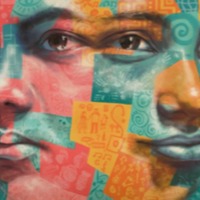
Natalicia
There are an estimated 403,000 people living in conditions of modern slavery in the United States (GSI 2018). The US attracts migrants and refugees who are particularly at risk of vulnerability to human trafficking. Trafficking victims often responding to fraudulent offers of employment in the US migrate willingly and are subsequently subjected to conditions of involuntary servitude in industries such as forced labour and commercial sexual exploitation. Natalicia was trafficked from Brazil into domestic servitude in the Boston, United States at the age of fourteen. She was working as a nanny when her employers invited her to travel to the US with them to take care of their toddler. Natalicia was granted a two-year visa to work as a domestic worker for the family. However, upon arriving in the US, she was forced to work long hours for no pay, to do housework as well as undertake childcare, and forced to sleep on the porch.
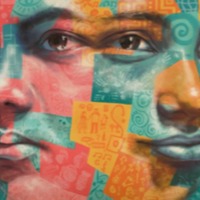
Joanna
From Joanna’s narrative it is unclear in which country Joanna experienced her exploitation. She was trafficked into prostitution abroad at the age of eighteen by the man she loved and the father of her child. After a while, her traffickers left her on the streets and she was picked up by police and taken to prison while they found a translator to communicate with her. When she was taken back home, her family and community had disowned her and she became homeless. She was helped by a woman who took her to a clinic for women who had experienced the same things she had.
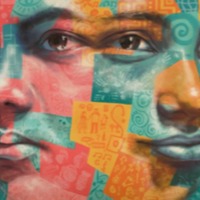
Kumari
There are an estimated almost 8 million people living in modern slavery in India (GSI 2018). India has a population of more than 1.3 billion people, there are still at least 270 million people living on less than US$1.90 per day. While laws, systems and attitudes regarding key 'fault lines' such as the caste system, gender and feudalism are rapidly changing, social change of this depth and scale necessarily takes time. In this context, it is perhaps unsurprising that existing research suggests that all forms of modern slavery continue to exist in India, including intergenerational bonded labour, forced child labour, commercial sexual exploitation, forced begging, forced recruitment into nonstate armed groups and forced marriage. Kumari was taken by a family who promised to provide her with an education. However instead she was forced to do all the housework, working long hours with restricted food. After a while she became too ill to work and was finally sent home.
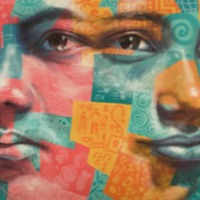
Layla
There are an estimated 136,000 people living on conditions of modern slavery in the United Kingdom (Global Slavery Index 2018). According to the 2017 annual figures provided by the National Crime Agency, 5, 145 potential victims of modern slavery were referred through the National Referral Mechanism in 2017, of whom 2,454 were female, 2688 were male and 3 were transgender, with 41% of all referrals being children at the time of exploitation. People are subjected to slavery in the UK in the form of domestic servitude, labour exploitation, organ harvesting and sexual exploitation, with the largest number of potential victims originating from Albania, China, Vietnam and Nigeria. This data however does not consider the unknown numbers of victims that are not reported. Layla* came to the UK from Kenya after escaping religious strife. She had found a school in the UK who had agreed to admit her, however upon arrival she was taken to a small house and foced into care work. Traffickers took her wages to pay back the ‘debt’ incurred from getting her to the country. Layla was forced to work long hours, prevented from spending time outside and was not properly fed. After 3 years the ‘school’ was shut down, but her trafficker continued to exploit her. Layla was finally able to leave her situation after she was diagnosed with cancer in her trafficker’s name so that he could receive the assistance payments. Layla was arrested for fraud and while police initially assumed she was the criminal, her lawyer realised she had been trafficked and helped her.
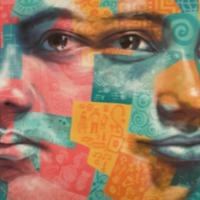
L.
There are an estimated 145,000 people living in conditions of modern slavery in Italy (GSI 2018). Italy is a destination, transit, and source country for women, children, and men subjected to sex trafficking and forced labour. Victims originate from Nigeria, Romania, Morocco, China, and other countries. Female victims are often subjected to sex trafficking in Italy after accepting promises of employment as dancers, singers, models, restaurant servers, or caregivers. Romanian and Albanian criminal groups force Eastern European women and girls into commercial sex. L fell in love with an older man who convinced her to runaway to Italy with him. After a while of staying at his friend’s house, L’s boyfriend coerced her into prostitution. She escaped one day with the help of an Albanian client who took her back home.
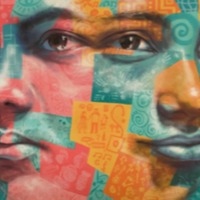
Lee CS
The Global Slavery Index 2018 estimates that there are 2,640,000 people living in conditions of modern slavery in The Democratic People’s Republic of Korea (North Korea). Men, women and children are subjected to forced labour and sex trafficking. Government oppression in the DPRK prompts many North Koreans to flee the country in ways that make them vulnerable to human trafficking in destination countries. Many of the estimated 10 000 North Korean women and girls who have migrated illegally to China to flee abuse and human rights violation are particularly vulnerable to trafficking. Some lure, drug, detain or kidnap North Korean women on their arrival, others offer jobs but subsequently force the women into prostitution, domestic service, or forced marriage. If found, Chinese authorities often repatriate victims back to the DPRK where they are subjected to harsh punishment including forced labour in labour camps or death. Lee CS was taken to China by a man she thought loved her. Upon arrival she was sold to a farmer, kept locked up and forced to become his partner.
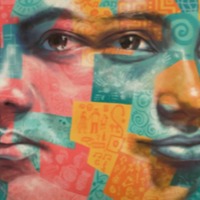
Charya
There are an estimated 610,000 people living in conditions of modern slavery in Thailand (GSI 2018). Men, women and children are victims of human trafficking for forced labour in the Thai fishing industry, subjected to physical abuse, excessive and inhumane working hours, sleep and food deprivation, forced use of methamphetamines and long trips at sea confined to the vessel. Due to the fishing industry relying on trans-shipments at sea to reduce expenditure, some find themselves trapped on long-haul trawlers for years at a time. This makes the monitoring of enslaves labour on fishing vessels costly and difficult. 201 Charya was trafficked on to a Thai fishing vessel where he was forced to work long hours and denied medication. He tells of his experience of illness on the vessel.
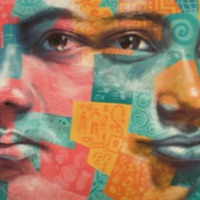
Fathiya
There are an estimated 85,000 people living in modern slavery in Yemen (GSI 2018). Young girls are subjected to child forced marriage, with UNICEF estimating 32% of girls being married before the age of 18. There is currently no legal age of marriage in Yemen and poverty, the practice of dowry and strict social and religious customs are drivers of child marriage in the country. With the onset of conflict within the country, estimates suggest that child marriage is on the rise. Fathiya was forced to marry at 12 years old. Now at 30, she has seven children and suffers with her health due to her early marriage and motherhood.
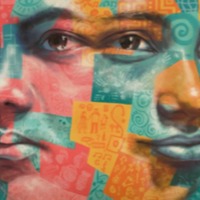
Segen
There are an estimated 451,000 people living in modern slavery in Eritrea (GSI 2018). The small country has a unique system of compulsory, open-ended military service for citizens that makes it one of the most oppressive states in the world. The government has enforced its current policy of sending all secondary school students to serve for a minimum of twelve months since 2003. While Eritrean law puts the minimum conscription age at 18, many teenagers find themselves recruited during high school at age 16 or even younger. In rural areas, where formal education is rarer, the army will visit villages to round up young girls and boys who look roughly of age, to begin their program of combat training and forced labour. Segen was 14 years old when she tried to flee Eritrea. However she was caught and imprisoned. In prison she was subjected to unhygienic conditions, and physical abuse.
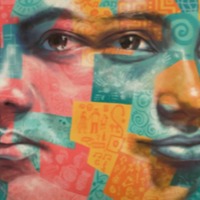
Maryfe
Today women represent around half of the total population of international migrants worldwide. They move, more and more, as independent workers, usually to more developed countries in search of a better life for themselves and for their families. Reproducing patterns of gender inequality, at destination they tend to find work in traditionally female-dominated occupations such as domestic work. Their vulnerabilities are often linked to precarious recruitment processes (including passport and contract substitution as well as charging of excessive fees), the absence of adapted assistance and protection mechanisms, the social and cultural isolation they can face at the destination due to language and cultural differences, lack of advance and accurate information on terms and conditions of employment, absence of labour law coverage and/or enforcement in the country of destination, and restrictions on freedom of movement and association, among other things. Maryfe migrated from the Philippines to Hong Kong in the hopes of earning more money abroad to support her children. Maryfe took a job caring for her employer’s disabled child and bedridden father. She was subjected to violence and threats daily and eventually broke her contract to return to the Philippines. However, still needing to provide for her children, Maryfe travelled abroad again, this time to Dubai, taking a job as a nanny. Maryfe was forced to work long hours with little sleep and no time off. When the family she worked for moved to a different country she was forced to go with them. Though Maryfe was able to escape her employment, she is now stuck undocumented in a foreign country.
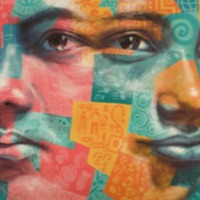
Selvi
There are an estimated almost 8 million people living in modern slavery in India (GSI 2018). India has a population of more than 1.3 billion people, there are still at least 270 million people living on less than US$1.90 per day. While laws, systems and attitudes regarding key 'fault lines' such as the caste system, gender and feudalism are rapidly changing, social change of this depth and scale necessarily takes time. In this context, it is perhaps unsurprising that existing research suggests that all forms of modern slavery continue to exist in India, including intergenerational bonded labour, forced child labour, commercial sexual exploitation, forced begging, forced recruitment into nonstate armed groups and forced marriage. Selvi worked in a mill in Palladam and was not paid for her 18 months’ work. After she had to leave the mill due to ill-health she recollected her experience.
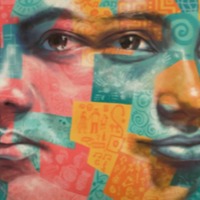
Kahlid
There are an estimated almost 8 million people living in modern slavery in India (GSI 2018). India has a population of more than 1.3 billion people, there are still at least 270 million people living on less than US$1.90 per day. While laws, systems and attitudes regarding key 'fault lines' such as the caste system, gender and feudalism are rapidly changing, social change of this depth and scale necessarily takes time. In this context, it is perhaps unsurprising that existing research suggests that all forms of modern slavery continue to exist in India, including intergenerational bonded labour, forced child labour, commercial sexual exploitation, forced begging, forced recruitment into nonstate armed groups and forced marriage. Kahlid, a 36 year old garment worker tells of how he is forced to work long hours for little pay in poor living conditions. He talks of the health problems he and other workers face in the garment factory.
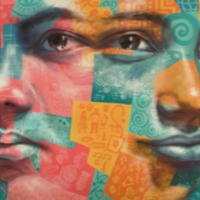
Shahid
There are an estimated almost 8 million people living in modern slavery in India (GSI 2018). India has a population of more than 1.3 billion people, there are still at least 270 million people living on less than US$1.90 per day. While laws, systems and attitudes regarding key 'fault lines' such as the caste system, gender and feudalism are rapidly changing, social change of this depth and scale necessarily takes time. In this context, it is perhaps unsurprising that existing research suggests that all forms of modern slavery continue to exist in India, including intergenerational bonded labour, forced child labour, commercial sexual exploitation, forced begging, forced recruitment into nonstate armed groups and forced marriage. At 15 years old Shahid was forced to work in a garment factory after his father borrowed money to pay for health care. He is forced to work long hours for little pay, what he does earn goes to pay off his father’s debt.
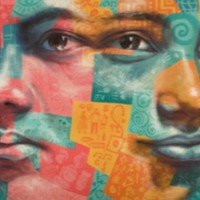
Nanhe
There are an estimated almost 8 million people living in modern slavery in India (GSI 2018). India has a population of more than 1.3 billion people, there are still at least 270 million people living on less than US$1.90 per day. While laws, systems and attitudes regarding key 'fault lines' such as the caste system, gender and feudalism are rapidly changing, social change of this depth and scale necessarily takes time. In this context, it is perhaps unsurprising that existing research suggests that all forms of modern slavery continue to exist in India, including intergenerational bonded labour, forced child labour, commercial sexual exploitation, forced begging, forced recruitment into nonstate armed groups and forced marriage.Nanhe was a teenager when he began working in a garment factory in Delhi to pay of his father’s debts. Nanhe is forced to stay in the factory for days at a time and tells of the health problems he and others suffer from working there.
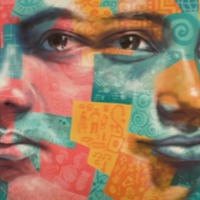
Annis
There are an estimated almost 8 million people living in modern slavery in India (GSI 2018). India has a population of more than 1.3 billion people, there are still at least 270 million people living on less than US$1.90 per day. While laws, systems and attitudes regarding key 'fault lines' such as the caste system, gender and feudalism are rapidly changing, social change of this depth and scale necessarily takes time. In this context, it is perhaps unsurprising that existing research suggests that all forms of modern slavery continue to exist in India, including intergenerational bonded labour, forced child labour, commercial sexual exploitation, forced begging, forced recruitment into nonstate armed groups and forced marriage.Annis was forced to go out to work after his father became sick and blind. He is forced to work long hours in a garment factory for little pay. Whatever he does earn, Annis sends back to his family. He tells of how he is forced to sleep where he works, live in unhygienic conditions and has his pay cut whenever he makes a mistake.

Setsofia Dowokpor
There are an estimated 133,000 people living in modern slavery in Ghana (GSI 2018). Ghana remains a source, transit, and destination country for men, women, and children subjected to forced labor and sex trafficking. Ghanaian boys and girls are subjected to forced labor within the country in fishing, domestic service, street hawking, begging, portering, artisanal gold mining, quarrying, herding, and agriculture, including cocoa. Research focused on the fishing industry on Lake Volta indicated that more than half of the children working on and around the lake were born in other communities and many of these children are subjected to forced labor; not allowed to attend school; given inadequate housing and clothing; and are controlled by fishermen through intimidation, violence, and limiting access to food. Boys as young as five years old are forced to work in hazardous conditions, including deep diving, and many suffer waterborne infections. A study of the prevalence of child trafficking in selected communities in the Volta and Central Regions indicated that children from nearly one-third of the 1,621 households surveyed had been subjected to trafficking, primarily in fishing and domestic servitude. Setsofia’s mother was suffering from ill health when she arranged for him to be trafficked to a fishing village along Lake Volta in a desperate bid to get month to treat her illness. Setsofia was just 8 years old, falsely promised an education and that he would only work part time. However he was forced to work day and night on dangerous fishing boats with little food or rest. International Needs Ghana, an FTS partner, visited Setsofia’s childhood village to talk about the need to keep children away from hazardous work and to urge slave owners to release their trafficked children. As a result of this outreach and pressure, his slave holder freed Setsofia August 12, 2016.
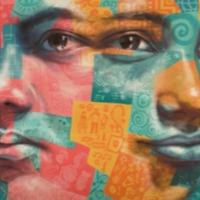
Kommu Sandya
It is estimated that almost 8 million people are living in conditions of modern slavery in India (GSI 2018). The skewed sex ratio in some regions of India has fuelled the trafficking and selling of women and young girls as brides within India. Women are reportedly sold off into marriage by their families, sometimes at a young age, and end up enduring severe abuse, rape and exploitation by their husbands. It is also reported that women and girls from impoverished backgrounds have been lured by promises of marriage by younger men from urban areas, then forced into sex work once married. With the authorities unable to prevent it, Kommu Sandya was married at 13 years old. She became pregnant and very ill within three months, having to abort the pregnancy at great cost to her parents. Though she became pregnant again and gave birth to a boy, her mother-in-law continues to physical and verbally abuse both Kommu Sandya and her children.
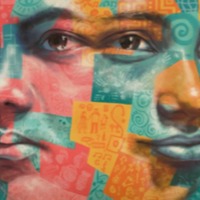
Muthyam Anitha
It is estimated that almost 8 million people are living in conditions of modern slavery in India (GSI 2018). The skewed sex ratio in some regions of India has fuelled the trafficking and selling of women and young girls as brides within India. Women are reportedly sold off into marriage by their families, sometimes at a young age, and end up enduring severe abuse, rape and exploitation by their husbands. It is also reported that women and girls from impoverished backgrounds have been lured by promises of marriage by younger men from urban areas, then forced into sex work once married. Muthyam Anitha was forced to stop her education to look after her ill father. After her father passed away, it was Muthyam’s responsibility to care for her family and she went to work as a domestic worker. After an incident with her aunt’s husband, Muthyam’s mother worried about her prospects and forced her to get married to a man she did not want to marry.
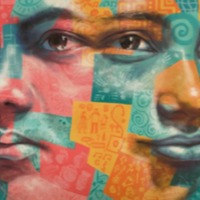
Byagari Anitha
It is estimated that almost 8 million people are living in conditions of modern slavery in India (GSI 2018). The skewed sex ratio in some regions of India has fuelled the trafficking and selling of women and young girls as brides within India. Women are reportedly sold off into marriage by their families, sometimes at a young age, and end up enduring severe abuse, rape and exploitation by their husbands. It is also reported that women and girls from impoverished backgrounds have been lured by promises of marriage by younger men from urban areas, then forced into sex work once married. Byagari Anitha wanted to continue her studies, but was forced to marry a boy from her village after her father became terminally ill. Though the authorities attempted to intervene, Byagari’s family forced her to marry in a secret ceremony against her will.
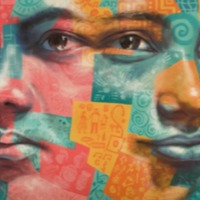
Borey
There are an estimated 610,000 people living in conditions of modern slavery in Thailand (GSI 2018). Men, women and children are victims of human trafficking for forced labour in the Thai fishing industry, subjected to physical abuse, excessive and inhumane working hours, sleep and food deprivation, forced use of methamphetamines and long trips at sea confined to the vessel. Due to the fishing industry relying on trans-shipments at sea to reduce expenditure, some find themselves trapped on long-haul trawlers for years at a time. This makes the monitoring of enslaves labour on fishing vessels costly and difficult. Borey was trafficked from Cambodia on to a Thai fishing vessel. Though he has now escaped conditions of slavery, Borey still suffers mental health issues from his trauma.